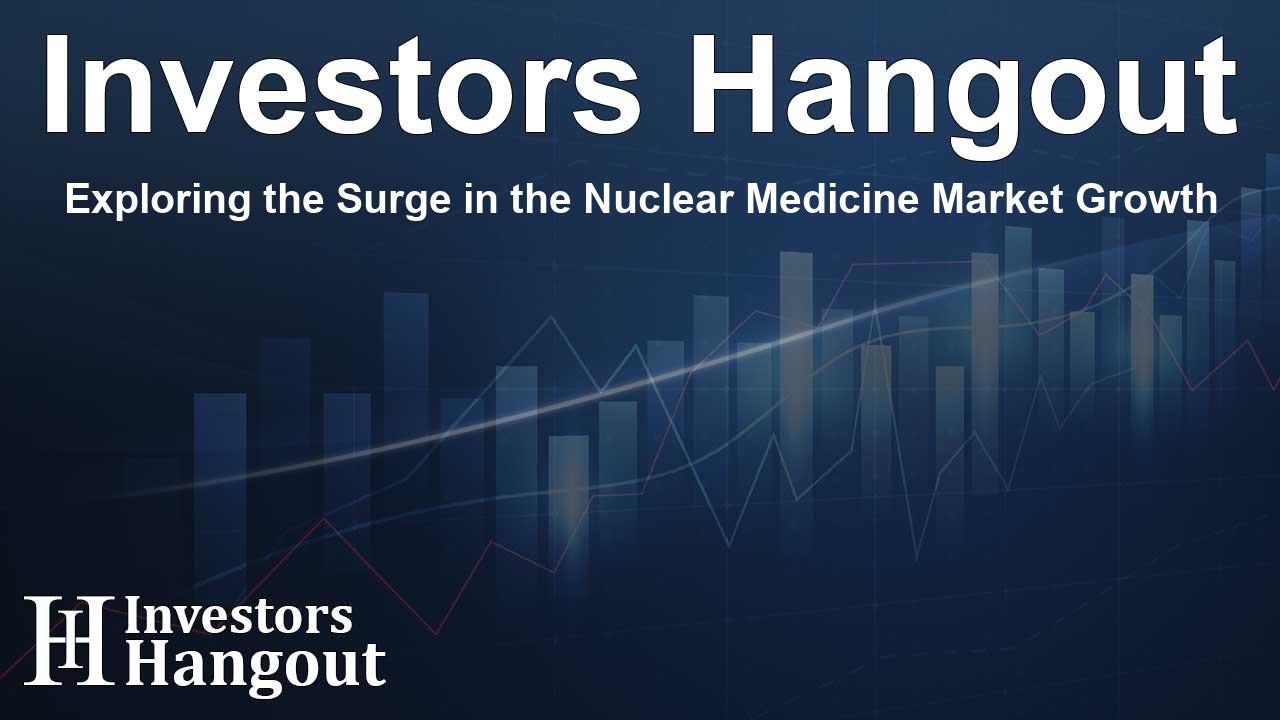Exploring the Surge in the Nuclear Medicine Market Growth

Understanding the Growth of the Nuclear Medicine Market
Nuclear medicine is rapidly changing the landscape of healthcare, offering innovative diagnostic and therapeutic solutions. As of 2023, the market size reached USD 13.6 billion and is projected to surge to USD 54.7 billion by 2032, reflecting a remarkable compound annual growth rate (CAGR) of 16.3% from 2024 to 2032. Key factors fueling this upward trajectory include the increasing prevalence of cancer and cardiovascular diseases, alongside a rising preference for non-invasive diagnostic techniques.
Factors Influencing Market Dynamics
Healthcare providers and patients alike are becoming increasingly aware of the potential benefits that nuclear medicine can bring. Continuous innovations in radiopharmaceuticals are at the forefront of this expansion, providing advanced imaging and treatment options. These advancements are supported by substantial investments from governments and research organizations that aim to enhance healthcare infrastructure and expand access to nuclear medicine.
Investment Trends in Nuclear Medicine
Many developed countries have initiated national programs that channel funds into cutting-edge imaging technologies. The focus is not just on diagnostic capabilities; these investments also aim to improve public health outcomes by ensuring that advanced treatments and diagnostics are more accessible to patients. As these initiatives unfold, the nuclear medicine market continues to witness substantial growth potential.
Market Segmentation Insights
The nuclear medicine market can be segmented into two main categories: diagnostics and therapeutics. The diagnostics segment is particularly noteworthy, generating approximately USD 9.4 billion in revenue in 2023. Emerging markets are experiencing increased healthcare investments, which enable better access to nuclear imaging technologies. With rising chronic diseases, the demand for nuclear diagnostics is expected to grow significantly in these regions.
Role of Nuclear Imaging Techniques
Nuclear imaging methods, especially myocardial perfusion imaging (MPI), are crucial for evaluating cardiac health. By providing insights into blood flow and heart function, these diagnostic techniques play a vital role in identifying and monitoring heart diseases. An aging population, paired with lifestyle changes, is leading to a greater need for effective cardiac monitoring through nuclear medicine.
End-User Analysis in Nuclear Medicine
The end-user analysis reveals that hospitals dominate the nuclear medicine market, reaching USD 33.3 billion by 2032. Hospitals have been quick to adopt advanced imaging technologies and invest in specialized nuclear medicine personnel. This broad range of applications, from diagnostics to theranostics, highlights the essential role that hospitals play in advancing nuclear medicine.
Advancements in Hybrid Imaging Systems
Moreover, hospitals are increasingly integrating hybrid imaging systems like PET/CT, SPECT/CT, and PET/MRI into their diagnostic processes. These advanced systems enhance precision by merging anatomical and functional imaging, leading to improved patient outcomes and higher diagnostic accuracy. The well-resourced environments of hospitals ensure they can accommodate these sophisticated technologies effectively.
Regional Market Review
Northern regions are notably prominent, with North America accounting for USD 7 billion in nuclear medicine revenue in 2023. The forecasted CAGR of 15.6% through 2032 is a strong indicator of the region's advanced healthcare infrastructure that supports the adoption of innovative imaging technologies such as hybrid imaging systems.
The Impact of an Aging Population
As the population ages, compounded by the rise in chronic and age-related conditions like Alzheimer's and various forms of cancer, the demand for nuclear diagnostics will also see a significant rise. This increasing need for early detection and personalized treatment strategies underscores the importance of nuclear medicine in modern healthcare.
Conclusion
The nuclear medicine market, driven by technological advancements, increasing investments, and growing healthcare demands, is on a path of substantial growth. With key players like Actinium Pharmaceuticals, GE Healthcare, and others pushing the boundaries of innovation, the sector is set to play a pivotal role in the future of healthcare diagnostics and therapeutics.
Frequently Asked Questions
What is the projected growth of the nuclear medicine market?
The nuclear medicine market is expected to reach USD 54.7 billion by 2032.
What factors are driving the growth in nuclear medicine?
The key factors include rising cancer rates, cardiovascular diseases, and innovations in diagnostic techniques.
Why are hospitals the main users of nuclear medicine?
Hospitals invest heavily in advanced imaging technologies and training professionals to leverage nuclear medicine effectively.
How does the aging population affect nuclear medicine demand?
An aging population leads to more chronic conditions, increasing the need for effective diagnostic solutions like nuclear imaging.
What role do governments play in nuclear medicine research?
Governments fund initiatives that improve healthcare infrastructure and support the adoption of nuclear medicine technologies.
About Investors Hangout
Investors Hangout is a leading online stock forum for financial discussion and learning, offering a wide range of free tools and resources. It draws in traders of all levels, who exchange market knowledge, investigate trading tactics, and keep an eye on industry developments in real time. Featuring financial articles, stock message boards, quotes, charts, company profiles, and live news updates. Through cooperative learning and a wealth of informational resources, it helps users from novices creating their first portfolios to experts honing their techniques. Join Investors Hangout today: https://investorshangout.com/
Disclaimer: The content of this article is solely for general informational purposes only; it does not represent legal, financial, or investment advice. Investors Hangout does not offer financial advice; the author is not a licensed financial advisor. Consult a qualified advisor before making any financial or investment decisions based on this article. The author's interpretation of publicly available data shapes the opinions presented here; as a result, they should not be taken as advice to purchase, sell, or hold any securities mentioned or any other investments. The author does not guarantee the accuracy, completeness, or timeliness of any material, providing it "as is." Information and market conditions may change; past performance is not indicative of future outcomes. If any of the material offered here is inaccurate, please contact us for corrections.